5 Big Changes Walmart Is Making in 2024 and How They’ll Affect You
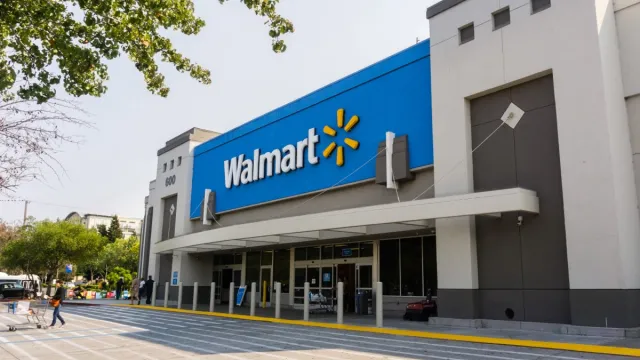
From new shopping carts to updated store layouts to a refreshed holiday return policy, Walmart has been busy making changes throughout 2023. And though customers have met these with mixed feelings, the company will continue to upgrade the shopping experience in the new year. Keep reading to discover the big changes Walmart is making in 2024, and how they will affect you.
RELATED: The Best “Luxury” Items at Walmart That Really Aren’t—But Look Great!
1
Walmart is removing self-checkouts in some locations.
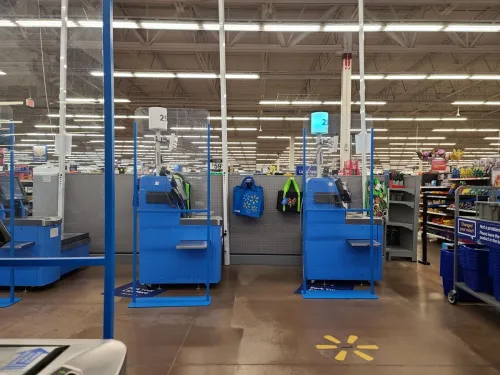
Walmart is far from the only retailer that has customers divided over its self-checkout lanes. However, Walmart shoppers have been exceptionally vocal about their thoughts.
One of the major issues they’ve addressed is needing to show their receipts on the way out. “Look. You can either trust me to do self-checkout or you can put your cashiers back in place like it used to be,” a recent viral copy-and-paste Facebook post stated. “I’m not interested in proving that I did your job for you anymore.”
Other customers have threatened boycotts over Walmart’s decision to put advertisements on self-checkout screens.
On the other hand, many shoppers were upset to learn that the retailer may be getting rid of self-checkout lanes, bemoaning the fact that they’d have to go back to traditional checkouts.
This came after a Sept. 2023 article in the Albuquerque Journal that announced two Walmart stores in New Mexico had recently been renovated to replace self-checkout lanes, with a third set to follow suit.
“We continually look at ways to provide our customers with the best shopping experience and that includes adjusting the checkout area in stores,” Walmart spokesperson Josh Havens told Business Insider at the time regarding the removals. But Havens didn’t share why these stores, specifically, were being adjusted.
However, when Best Life reached out to Walmart about rumors that the change would be widespread, a company spokesperson said, “There are no current plans for self-checkout removals nationwide.”
2
Walmart is introducing a buy-now-pay-later option.
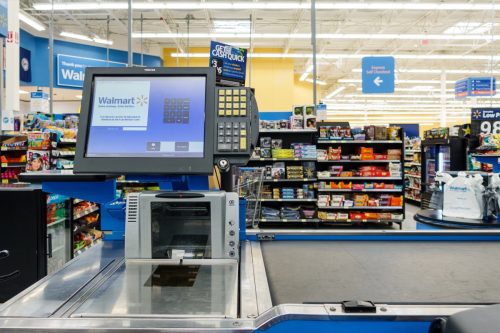
While self-checkouts might strike a negative nerve for some, Walmart hopes its new buy-now-pay-later option at these lanes will be a more positive experience.
As of a Dec. 19 press release, more than 4,500 U.S. Walmart locations had added buy-now-pay-later (BNPL) to their self-checkout kiosks through the company Affirm.
According to Reuters, the new initiative allows buyers to divide payments over three to 24 months for transactions of at least $144—not including groceries.
In addition to dollar amount and item restrictions, customers must also be approved for the BNPL plan. It’s available for both online and in-person shopping, however, all users are required to apply by entering the last four digits of their social security number. If approved, you’ll get a barcode that you can use at checkout before you go to pay.
According to Affirm’s website, there are no late or service fees, but they do charge interest, which will always appear on the checkout screen.
RELATED: 6 Great and Underrated Finds You Should Be Buying at Walmart.
3
More digital orders will be fulfilled in Walmart stores.
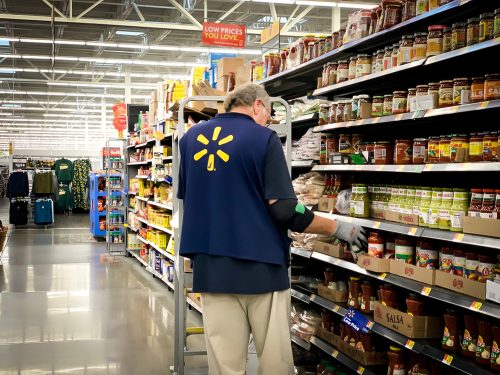
Last year, Walmart made roughly $53.4 billion in online sales, compared to Amazon’s $220 billion, as Business Insider recently noted. To try to get a leg up on the e-commerce giant, Walmart is now following in Target’s footsteps and will fulfill more online orders in their stores, in addition to their 200 distribution facilities.
At a Morgan Stanley retail conference on Dec. 20, Walmart CFO John David Rainey shared some of the differences between the companies: “The most expensive part of delivery is the last mile. That’s where our physical footprint of 4,700 stores in the United States that are within ten miles of 90% of Americans gives us an enormous advantage.”
Walmart has already redesigned many of its stores to allow more space for sorting and shipping, and they will continue to renovate come 2024. It’s yet to be seen how the change will affect Walmart’s profits, but the company hopes it will allow it to better compete with Amazon—and to offer customers faster delivery.
RELATED: Walmart Sells These Same 8 Food Products for Less Than Dollar Tree.
4
Walmart is adding parcel stations to delivery hubs.
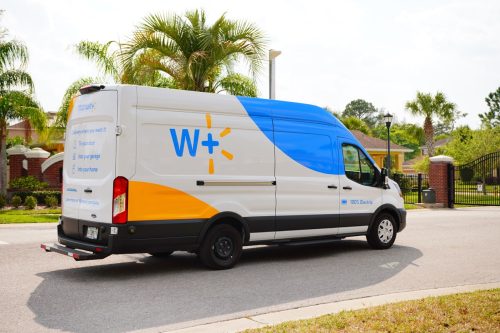
In a corporate statement released on Nov. 21, Jennifer McKeehan, senior vice president of transportation and delivery at Walmart U.S., shared that the company will be adding parcel stations to some of its 4,000 stores that act as delivery hubs.
“Parcel stations help us move goods even faster to a customer’s home by using our Private Fleet to transport more online orders. Packages originate in our fulfillment centers and move to a sortation center or directly to stores, where they are then delivered to a customer’s home using our last-mile delivery network,” she explained. “In many ways you can think of a parcel station like a mini post office that receives and delivers packages.”
“For customers, parcel stations give them more time to place online orders on a greater assortment of merchandise for Next Day Delivery,” she said, adding that the process ultimately lowers the cost of delivery, which Walmart “can reinvest back into the customer experience.”
Walmart hopes to have 40 parcel stations in stores by the end of 2023 and plans to add them to more stores in the new year.
5
Walmart is offering free samples.

Since April, Walmart has been rolling out testing demo stations where customers were offered free product samples on weekends, Parade reported.
More than 120 stores participated in the demo station testing phase, according to a June press release.
“For suppliers, these demos create a massive opportunity to drive discovery and conversion, such as when launching a new product or driving an always-on presence for core products,” the press release read. “For customers, this creates an experience to look forward to, and some have already shared that these demo weekends feel like customer appreciation events.”
According to CNBC, the retailer plans to expand the testing stations into more than 1,000 stores by the end of January 2024. As of right now, there is no set list of which locations will be the first to receive the demo stations.
For more retail news delivered straight to your inbox, sign up for our daily newsletter.